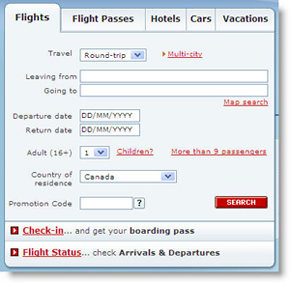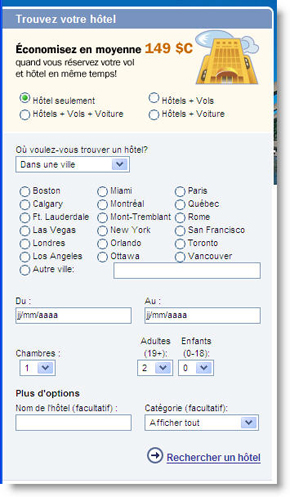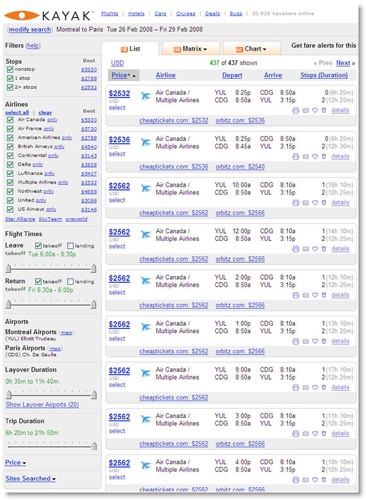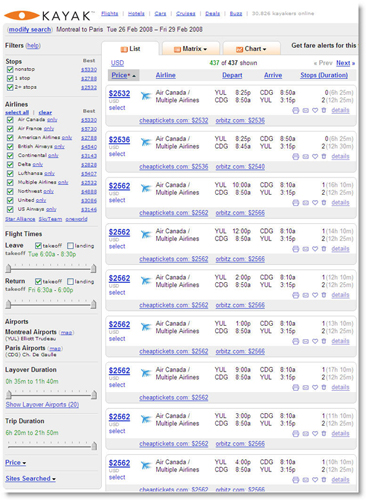Search Engine Usability – Part 2/3
INTRODUCTION: ADVANCED RESEARCH, THE BLACK SHEEP OF RESEARCH.
Another change of approach in the field of search engine ergonomics concerns the use of advanced searches.
Already ten years ago, Jacob Nielsen published an " alert box " warning designers about the abusive use of advanced search, he reiterated in 2001 in another " alert box " in which he suggested, among other things, to relegate the advanced search to the background so that it is only used to refine a search if the basic search fails. This recommendation came from the fact that this type of research generally had the following problems:
- Forms that are too long,
- Unclear or insignificant restriction fields for users,
- Search results not always relevant.
These issues resulted in users generally failing to use Advanced Search properly and thus led to a general disdain towards this feature.
NEW LOOK AT ADVANCED SEARCH:
It is with little ready with the preceding observations that Stephen Turbek begins his post “ advancing advanced search ” (on the blog of boxes and arrows). It draws up an inventory of recent practices in this field and presents the use of “ progressive disclosure ” to improve advanced research. Thanks to the identification of the problems mentioned above as well as a growing recognition of the effectiveness of ergonomic studies during the development of Internet sites, we now have the following alternatives to improve the advanced search functionalities:
- Advanced search from the start of the process:
For areas in which the data sought is easily identifiable by specific criteria, it seems obvious that a basic search consisting of a single input field is not always the optimal solution. This is the case in the travel industry where searches for hotels or airline tickets require an “advanced” interface from the first stages of the search (see below).


Fig 1 and 2: from left to right, air canada flight search engine, expedia hotel search engine.
- Advanced search by filtering results:
There are also several developments in the presentation of search results. The results filtering functionalities have improved a lot and make the results pages much more interactive than in the past, this is very similar to a form of advanced search.

Fig 3: Kayak results page, the filters are presented on the left column and the results are updated without refreshing the window.
- Progressive presentation of filters (progressive disclosure):
The progressive presentation of filters is very similar to the previous point. The difference comes from the fact that here, the restriction fields linked to each filter are not displayed by default. This could therefore correspond to Kayak's filtering interface if the default display were that of figure 4 rather than that of figure 3.

Fig 4: Kayak results page with filters collapsed.
WHICH APPROACH TO CHOOSE:
Based on the constraints presented in part 1 as well as on a brief analysis of the different approaches presented above, we can deduce the following advantages and disadvantages for each of them:
Advanced search from the start of the process:
- Advantages :
- This approach mainly allows to minimize the search steps. The user can thus obtain more targeted results from the start of his search.
- Disadvantages:
- If the criteria presented from the beginning are too restrictive it can be difficult to obtain search results, which can discourage users.
- If the proposed criteria labels are not self-explanatory, users may not be able to use them correctly.
- Likewise, if users are unfamiliar with the structure of the content they are looking for this technique might not be effective.
- When to use it:
- Users are familiar with the domain,
- They have some experience in using search engines on the Internet,
- They want to do specific research.
Advanced search by filtering results:
- Advantages :
- Filtering makes it easier to understand the structure of the results as well as to understand the role of filters. This is due to the fact that the user can view all the filters available to him and see their immediate impact when he uses them. For this last point to be optimal, it is necessary to set up a dynamic display system that does not require refreshing the entire page.
- It also allows easy refinement of the result set.
- Filtering can also help minimize the size of the basic search form since most of the refinement will be done from the preliminary results.
- Disadvantages:
- In some cases filtering can add additional steps in the search process (trial and error phase if the role of a filter is not clear).
- It can also confuse inexperienced users on the web.
- Filtering features require a relatively large visual space and can therefore overload the presentation of search results.
- When to use it:
- Users have low knowledge of the research domain. It is easier for users to understand the purpose of each filter if they directly see the restriction fields associated with them. With this method more information is presented to guide users.
- Users have some experience searching the Internet, as effective use of filtering features requires some practice.
- They want to do exploratory research.
Progressive presentation of filters (progressive disclosure):
- Advantages :
- The progressive presentation mainly allows to offer the efficiency of filtering without overloading the search results pages.
- Like the previous method, the progressive layout can help minimize the size of the basic search form.
- It offers more control to users when using filtering. Users can view only the filters they need.
- Disadvantages:
- The progressive presentation can complicate the understanding of certain filters if their title is not judiciously chosen. In some cases, users may be required to display the fields of the chosen filter to understand its role and its potential impact.
- It can therefore add trial-and-error steps to the research process.
- When to use it:
- Users have a good knowledge of the domain. Indeed, by presenting only the label of a filter, it is more difficult to understand its role than if we also display all the restriction fields associated with it.
- User search experience is less important for this method. Indeed, experienced users will probably have no problem displaying the filters they want to use. Moreover, inexperienced users, who are generally less inclined to use filtering, will not have an additional visual load to interpret. Despite this, it is still necessary to make sure to present appropriate guidance for this category of users in case they want to use it.
- Users want to carry out exploratory research.
CONCLUSION OF PART 2:
The purpose of this post was mainly to have an overview of the advantages and disadvantages of different approaches to better meet the research needs of users. This, I hope, will be useful to us during future mandates involving search engine interfaces. However, this presentation should only serve as a basis for reflection, since the final decision to implement a particular approach will greatly depend on complete analyzes of the target users and the context of use specific to each project. Analyzes that may lead designers to set up a complex search engine combining several approaches presented here.
to follow, review of the pagination of search results. (Keep you posted: ) 



.jpg)









